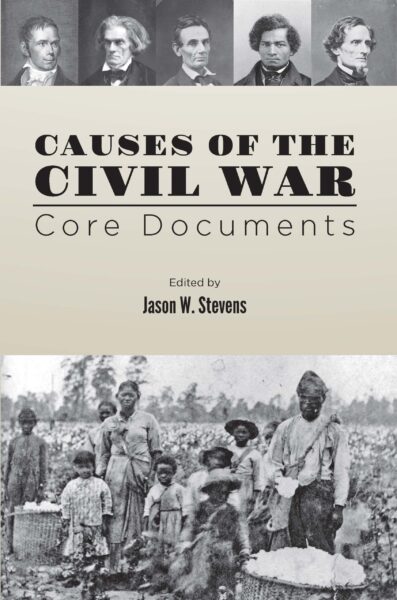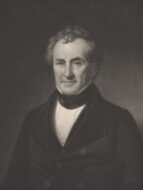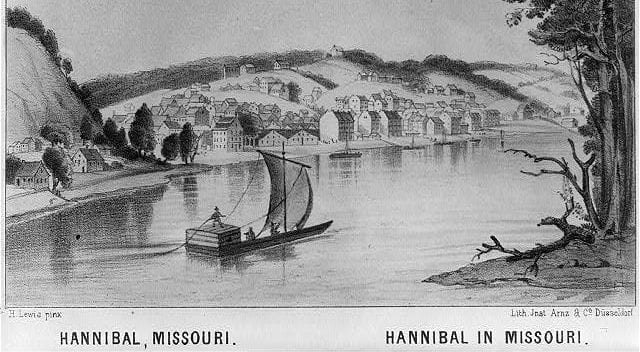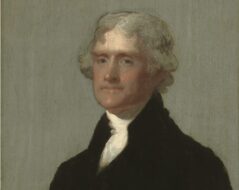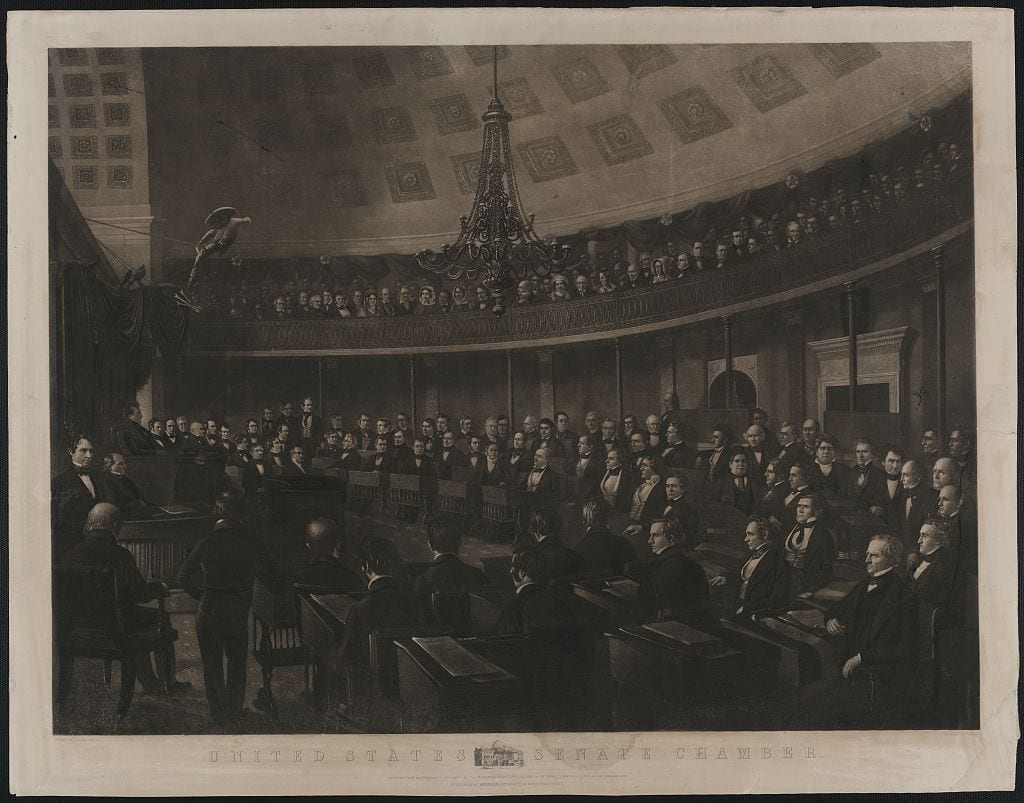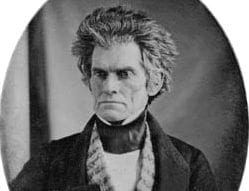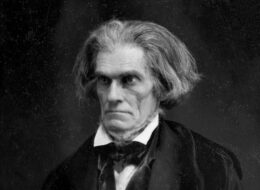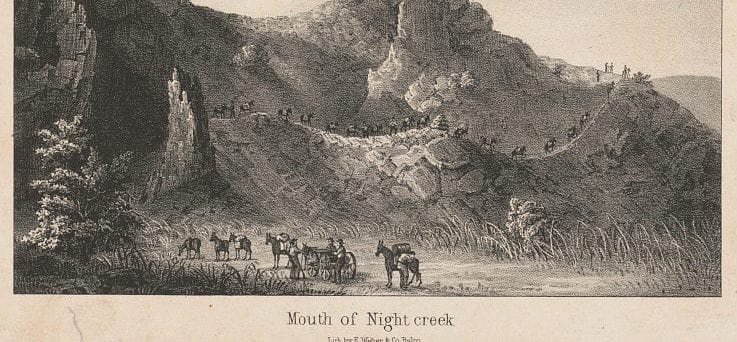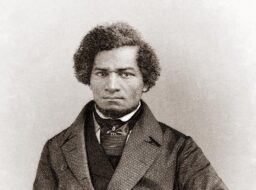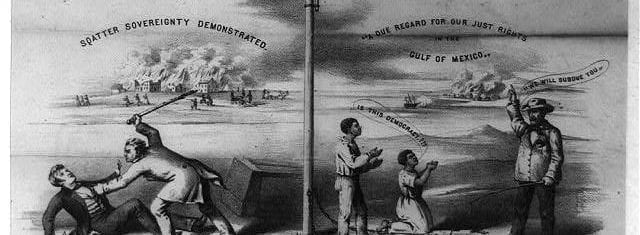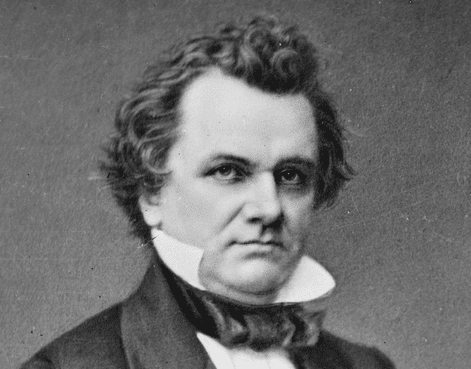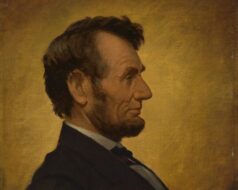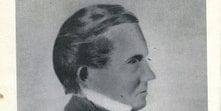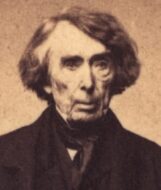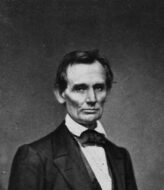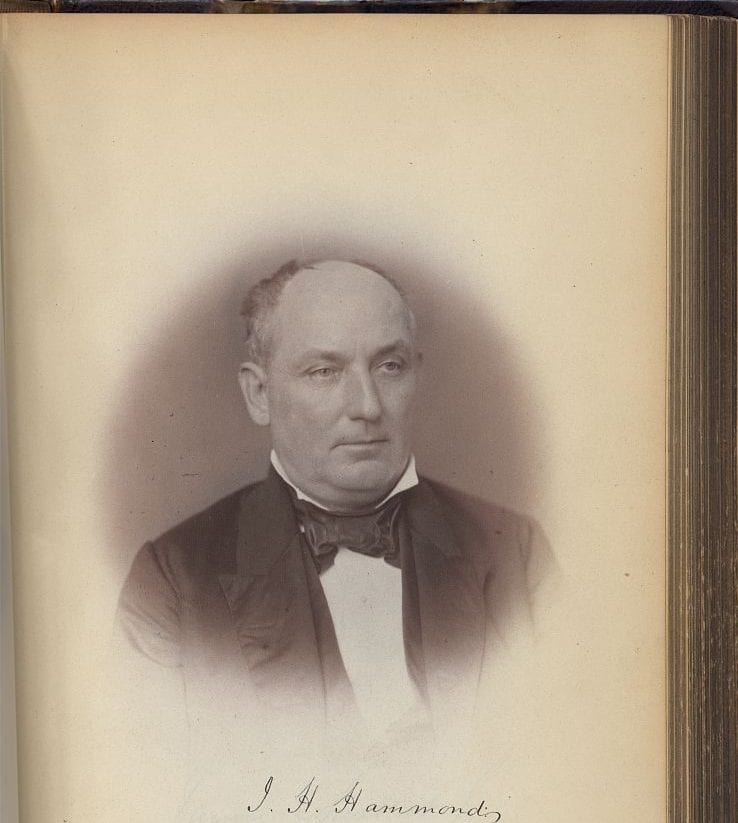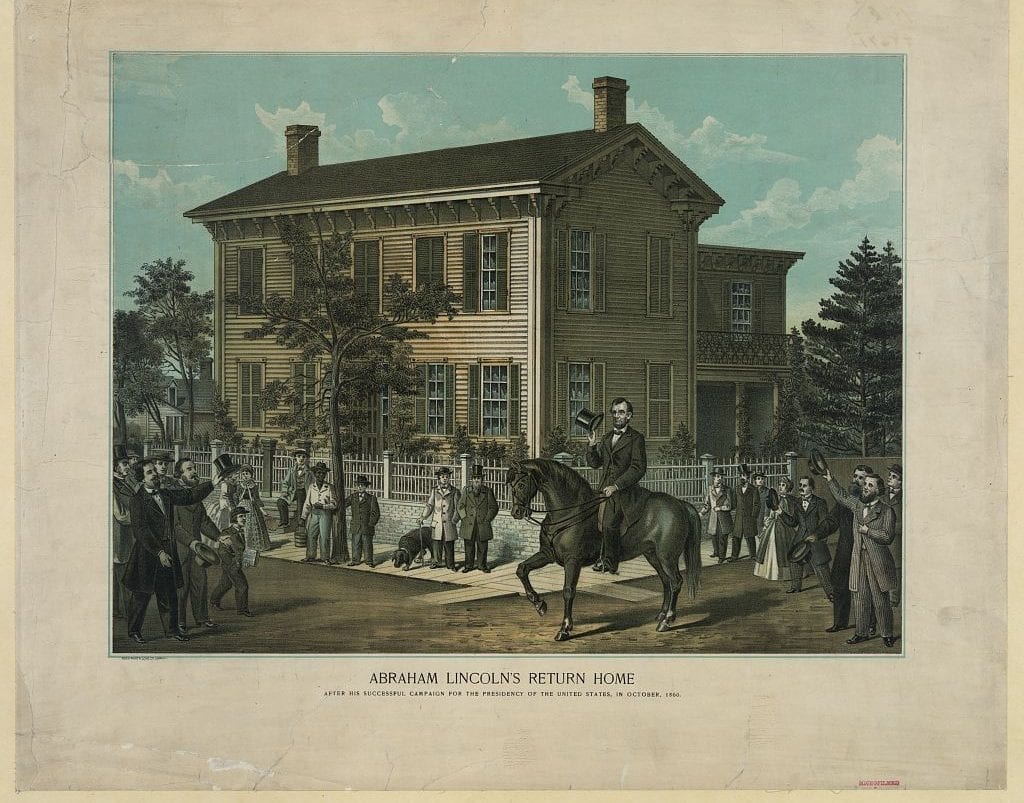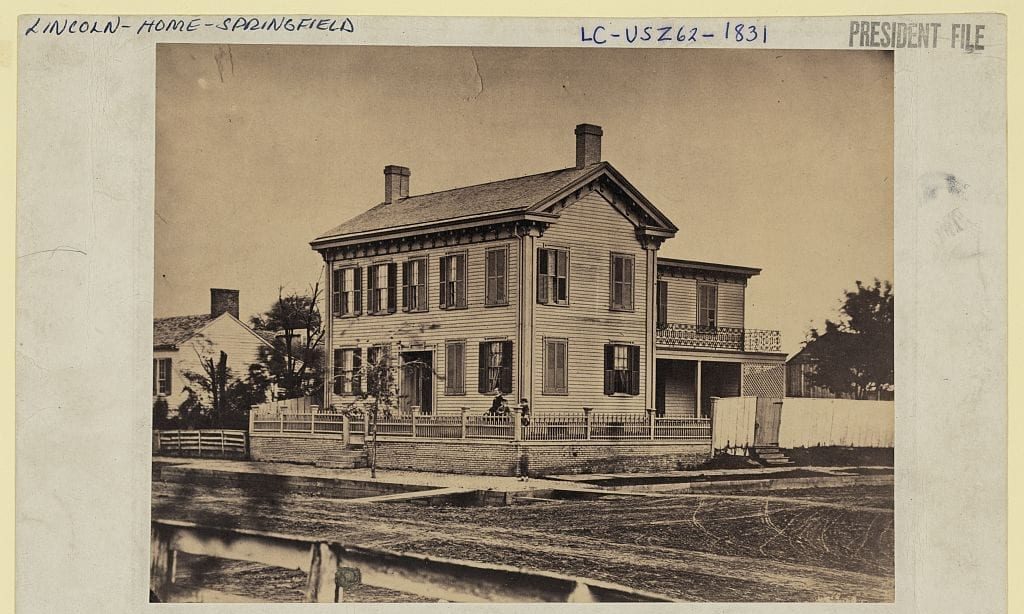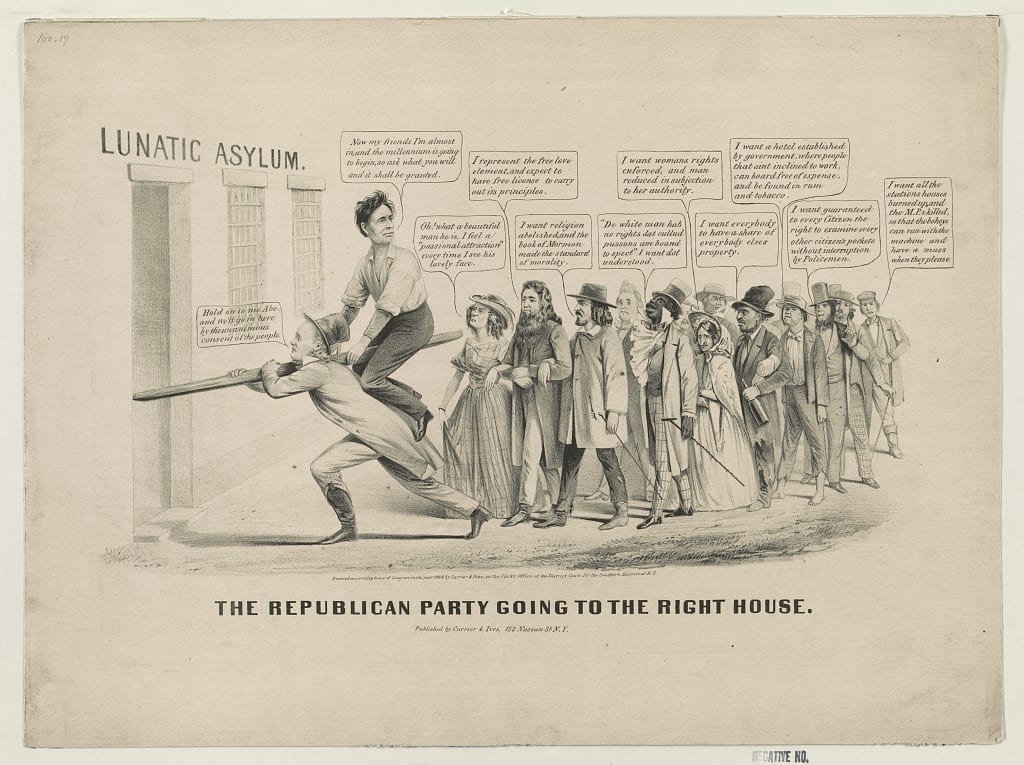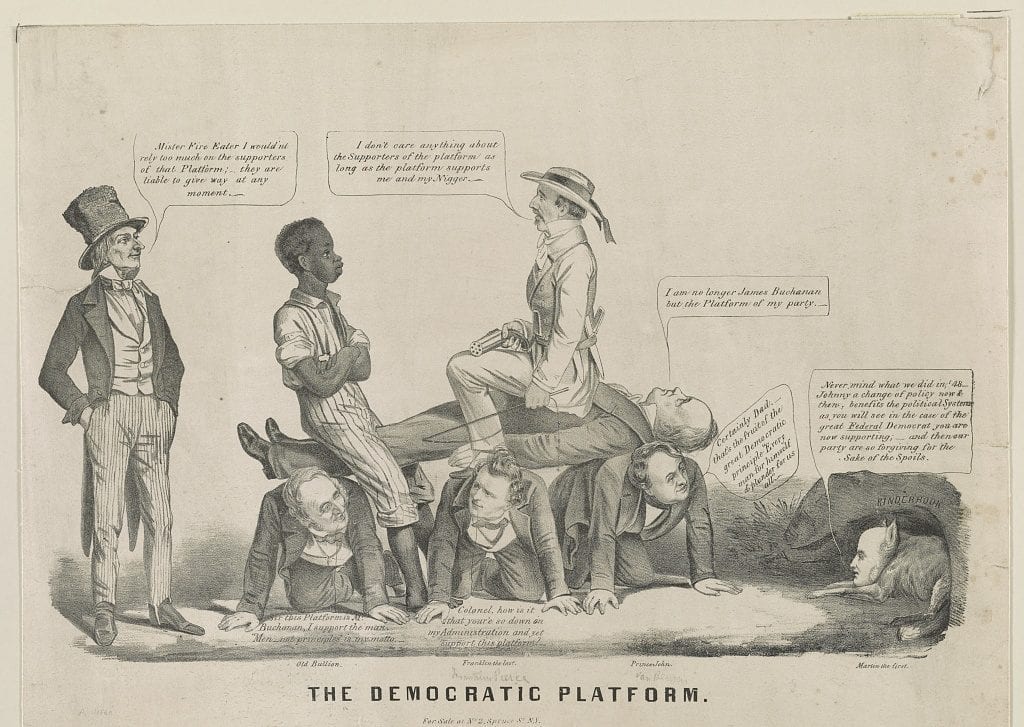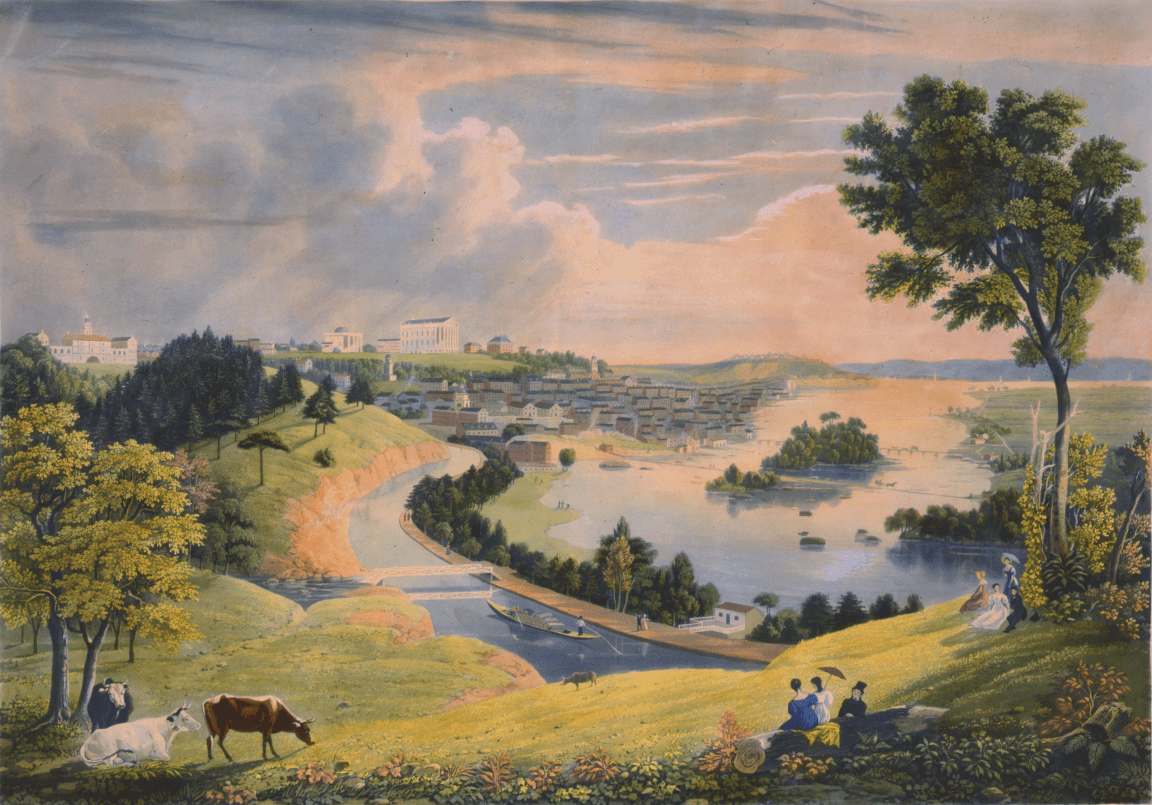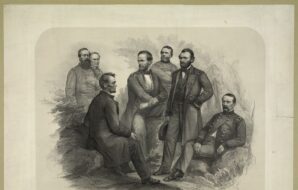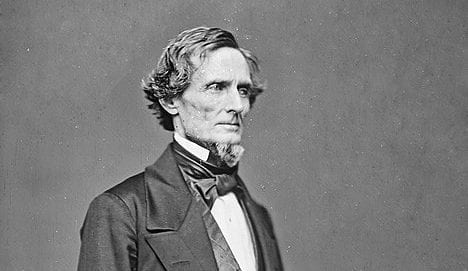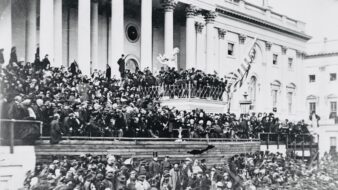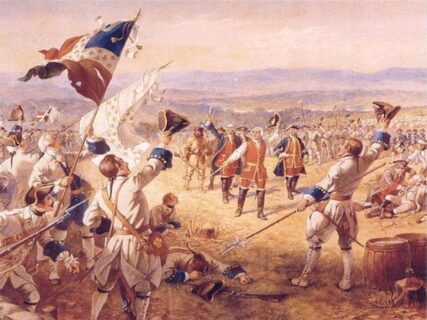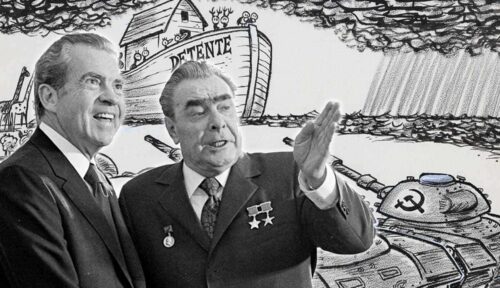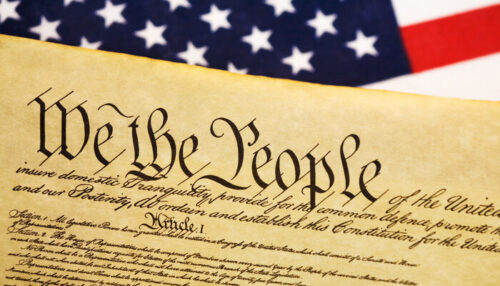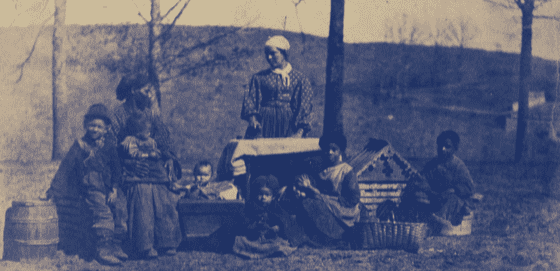
Causes of the Civil War
This volume of primary documents on the causes of the Civil War presents the history of the American political order during its most tumultuous and challenging time. More than a century and a half after the crisis came to an end, Americans remain fascinated by it, as they should be. The Civil War is the defining event in American political development. It put to the test whether the “one people,” as Thomas Jefferson wrote in the Declaration of Independence, would remain one.
The documents selected for inclusion in this volume range from a little-known 1819 Congressional speech by James Tallmadge Jr. on the future status of slavery in the territories to Abraham Lincoln’s widely read First Inaugural Address (1861), in which he tried to prevent civil war as Southern states seceded. In between, the reader will discover the central political, constitutional, moral, social, and economic themes that shaped the nation’s history during its most critical period, as told by those who lived through it.
The documents trace these themes, from both the Northern and Southern points of view. In their famous debate in 1830, Senators Daniel Webster (Massachusetts) and Robert Y. Hayne (South Carolina) argued over two radically different understandings of the origin and nature of the American Union and the legality of secession (Webster-Hayne Debates (1830)). William Lloyd Garrison (On the Constitution and the Union (1832)), John C. Calhoun (Speech on Abolition Petitions (1837)), and Abraham Lincoln (Fragment on the Constitution and the Union (1861)) discussed the proper relationship between the Constitution and the Union, and its effect on understanding secession and the dissolution of the government. George Fitzhugh (Sociology for the South (1854)) and James Henry Hammond (“Mud Sill” Speech (1858)) argued that the slave system of the South was superior to the free labor system of the North, while William H. Seward (“An Irrepressible Conflict” (1858)) and Abraham Lincoln (Address Before the Wisconsin State Agricultural Society (1859)) defended free labor. Speeches and resolutions before Congress (Speech to Congress (1819); Missouri Compromise Act (1820); Webster-Hayne Debates (1830); Speech on Abolition Petitions (1837); Speech on the Oregon Bill (1848); The Compromise of 1850 (1850); Appeal of the Independent Democrats (1854); “Nebraska Territory” (1854); “Mud Sill” Speech (1858)); interpretations of executive power by Abraham Lincoln (First Inaugural Address (1861)); and arguments in the Dred Scott Supreme Court case (Dred Scott v. Sandford (1857); Reply to the Dred Scott Decision (1857)) addressed the use and abuse of the legitimate powers under the Constitution of the three branches of government. Finally, and most important, Lincoln and Stephen A. Douglas argued over the limits of popular sovereignty, and thus over the connection between the Declaration of Independence and the Constitution (Reply to the Dred Scott Decision (1857); “Homecoming” Speech (1858); Fragment on the Constitution and Union (1861)).
Despite these different perspectives, however, all of the documents in this collection revolve around one central idea that is at the heart of any attempt to understand the coming of the Civil War: slavery, or, perhaps more rightly, the extension of slavery into the territories. From out of the territories new states came into the Union, and with them the power either to protect or to destroy slavery forever by Constitutional amendment, depending on whether proslavery or antislavery forces dominated in the Congress and in the state legislatures. It was in the territories, therefore, that everyone at the time understood that the future of slavery, and with it, the future of the nation, would be decided.
No one can read these documents today without sensing the overwhelming significance the debate over slavery had in the minds of the people of that era, as it was the only serious issue that threatened to divide them and destroy their political existence. South Carolina’s Declaration of the Causes of Secession (South Carolina’s Declaration of the Causes of Secession (1860)), like similar reports issued by every state that eventually left the Union, identified the protection of slavery as the primary justification for secession. From all points of view and all walks of life, the core argument always came back to slavery in one way or another, as these documents illustrate.
From these documents, the reader can come to understand and appreciate not only the history of the United States during the Civil War era, but also something about the challenges we have faced and the progress we have made as “one people.” If we are to remain one and dedicated to our defining proposition—that all are created equal—every generation of Americans must understand the time and the reasons why we almost ceased to be.
Thematic Table of Contents
Anti-slavery Arguments
James Tallmadge Jr., Speech to Congress (February 15, 1819)
William Lloyd Garrison, “On the Constitution and the Union” (December 29, 1832)
Frederick Douglass, “What to the Slave is the Fourth of July?” (July 5, 1852)
Appeal of the Independent Democrats to the People of America (January 19, 1854)
Abraham Lincoln, Speech on the Repeal of the Missouri Compromise (October 16, 1854)
Abraham Lincoln, “House Divided” Speech (June 16, 1858)
William H. Seward, “An Irrepressible Conflict” (October 25, 1858)
Abraham Lincoln, Address before the Wisconsin State Agricultural Society (September 30, 1859)
Pro-slavery Arguments
John C. Calhoun, Speech on Abolition Petitions (February 6, 1837)
John C. Calhoun, Speech on the Oregon Bill (June 27, 1848)
George Fitzhugh, Sociology for the South, or The Failure of Free Society (1854)
James Henry Hammond, “Mud Sill Speech” (March 4, 1858)
Popular Sovereignty
Stephen A. Douglas, Nebraska Territory (January 30, 1854)
Abraham Lincoln, Speech on the Repeal of the Missouri Compromise (October 16, 1854)
Stephen A. Douglas, “Homecoming” Speech at Chicago (July 9, 1858)
Political Compromises over Slavery
Henry Clay, Missouri Compromise Act (March 6, 1820)
Thomas Jefferson, Letter to John Holmes (April 22, 1820)
Henry Clay, The Compromise of 1850 (January 29, 1850)
Constitutional Arguments over Slavery
Roger Taney, Dred Scott v. Sandford (March 6, 1857)
Abraham Lincoln, Reply to the Dred Scott Decision (June 26, 1857)
South Carolina’s Declaration of the Causes of Secession (December 24, 1860)
Jefferson Davis, Inaugural Address (February 18, 1861)
Abraham Lincoln, First Inaugural Address (March 4, 1861)
The Constitution and the Union
Daniel Webster and Robert Y. Hayne, Webster-Hayne Debates (January 1830)
William Lloyd Garrison, “On the Constitution and the Union,” (December 29, 1832)
Abraham Lincoln, Fragment on the Constitution and Union (January 1861)
Party Platforms
Republican Party Platform (May 17, 1860)
Democratic Party Platform (June 2, 1856 and June 18, 1860)
James Tallmadge Jr., Speech to Congress (1819)
- How does Tallmadge understand slavery and what are his views on the possibility of a sectional crisis, or even a civil war, regarding the status of slavery in the territories? What legal and constitutional arguments does Tallmadge make in defense of prohibiting slavery in the territories, and how might the Southern opposition at this time respond?
- How does Tallmadge’s approach to the legal status of slavery in the territories compare to the Missouri Compromise (1820)?
Henry Clay, Missouri Compromise Act (1820)
- Why does Section 4 of the law require Missouri to have a “republican” constitution and form of government, and what does that mean exactly? What does the Missouri Compromise say about the status of slavery, both in regards to Missouri and the rest of the Louisiana Territory, and what is the significance of the 36°30′ line? How, and in what ways, does the law represent a compromise between North and South on the question of slavery?
- How would William Lloyd Garrison (“On the Constitution and the Union” (1832)) and Abraham Lincoln (Speech on the Repeal of the Missouri Compromise (1854)) think differently about the Missouri Compromise? What explains the difference in their respective approaches?
Thomas Jefferson, Letter to John Holmes (1820)
- What was Jefferson’s reaction to the Missouri question, and why does he characterize it as “a fire bell in the night”? What does Jefferson mean when he says that, in regard to slavery, “we have the wolf by the ears,” with justice on one side, and self-preservation on the other? What does this tell us about his views on slavery? How does Jefferson compare the generation of 1776 to the younger generation of Americans?
- How do Jefferson’s views on slavery compare to others in this collection?
Daniel Webster and Robert Y. Hayne, Webster-Hayne Debates (1830)
- What are the main points of difference between Webster and Hayne, especially on the question of the nature of the Union and the Constitution? How do Webster and Hayne differ in regard to their understandings of the proper relationship among the several states and between the states and the national government? Where in these debates do we see a possible argument in defense of Constitutional secession by the states, later claimed by the Southern Confederacy before, during, and after the Civil War?
- In what way(s) does South Carolina’s Declaration of the Causes of Secession (1860) and Jefferson Davis’s Inaugural Address (1861) represent a fulfillment of the arguments put forth by Hayne in the debates? In what way(s) does Lincoln’s First Inaugural (1861) represent a fulfillment of the arguments put forth by Webster in the debates?
William Lloyd Garrison, “On the Constitution and the Union” (1832)
- Why does Garrison characterize the Constitution as an “infamous bargain” and an “unholy alliance”? What is the relationship between the Constitution of the United States and the Declaration of Independence, according to Garrison? How does Garrison view the potential splitting up of the Union between North and South over the slavery question?
- How does Garrison’s understanding of the Constitution and Union compare to Daniel Webster’s (Webster-Hayne Debates (1830)) and Abraham Lincoln’s (Fragment on the Constitution and the Union (1861); First Inaugural Address (1861))? Does Frederick Douglass agree or disagree with Garrison’s understanding of the Constitution as a pro-slavery document, based on “What to the Slave is the Fourth of July?” (1852)?
John C. Calhoun, Speech on Abolition Petitions (1837)
- What does Calhoun mean when he refers to slavery as “a positive good”? Why is it better to be a slave than a poor man, according to Calhoun?
- Does Calhoun have the same understanding of slavery as Thomas Jefferson (Letter to John Holmes (1820))? Which authors in this collection would Calhoun classify as “fanatics”?
John C. Calhoun, Speech on the Oregon Bill (1848)
- According to Calhoun, what will a future historian of the decline and fall of the American Union think was the cause of its failure? Why does Calhoun reject the principles of natural liberty and natural equality? What does Calhoun mean, exactly, when he says that liberty is a “reward” or a “prize to be won”? How does Calhoun’s understanding of liberty depart from that of the American Founders?
- Does Calhoun’s understanding of the Declaration of Independence come closer to the ideas expressed by Chief Justice Roger Taney (Dred Scott v. Sandford (1857)) or George Fitzhugh (Sociology for the South (1854))?
Henry Clay, Compromise of 1850 (1850)
- What reasons are given for the enactment of the law in the preamble? What does the law say about the future status of slavery in California, the Mexican Territory, and the District of Columbia? What reasons are given in each case? How, and in what ways, does the law represent a compromise between North and South on the question of slavery?
- How would Frederick Douglass (“What to the Slave is the Fourth of July?” (1852)) and John C. Calhoun (Speech on the Oregon Bill (1848)) think differently about the Compromise of 1850? What explains the difference in their respective approaches?
Frederick Douglass, “What to the Slave is the Fourth of July?” (1852)
- Why would Douglass want to deliver this speech on July fifth instead of the fourth? What is the meaning and significance of the Fourth of July, from the slave’s point of view? Why is slavery a violation of the Founders’ principles from the Declaration of Independence, according to Douglass, and why does he call the Founders “statesmen, patriots and heroes”? Does Douglass believe that the United States Constitution is a pro-slavery or an anti-slavery document?
- In his views on slavery and the Constitution, how does Douglass differ from his fellow abolitionist William Lloyd Garrison (“On the Constitution and the Union” (1832)) and from Abraham Lincoln (Speech on the Repeal of the Missouri Compromise (1854); First Inaugural Address (1861))?
Appeal of the Independent Democrats to the People of America (1854)
- Why do the Independent Democrats say slavery and the Union are incompatible?
- In what ways do the Independent Democrats differ from their fellow Democrat, Stephen A. Douglas (“Nebraska Territory” (1854)), on the Kansas-Nebraska Act? What explains these differences?
Stephen A. Douglas, Nebraska Territory (1854)
- How does Douglas defend the principle of popular sovereignty? On what ideas or principles does it rely?
- In Speech on the Repeal of the Missouri Compromise (1854) and Reply to the Dred Scott Decision (1857), what is Lincoln’s criticism of popular sovereignty? Is he right to say that the people can’t vote to make slavery morally right?
Abraham Lincoln, Speech on the Repeal of the Missouri Compromise (1854)
- Why does Lincoln believe that Stephen Douglas’s policy of being indifferent to whether people of a territory permitted slavery or not is equivalent to “covert real zeal for the spread of slavery”? What is “the sheet anchor” of American republicanism, according to Lincoln, and how does the Kansas-Nebraska Act of 1854 violate it? What does Lincoln mean when he says that the Union must be made “worthy of the saving”?
- How does the Kansas-Nebraska Act of 1854 compare to earlier compromises on slavery, such as the Missouri Compromise Act (1820) and the Compromise of 1850 (1850)? Based on Jefferson’s Letter to John Holmes (1820), how would Thomas Jefferson view the repeal of the Missouri Compromise?
George Fitzhugh, Sociology for the South, or The Failure of Free Society (1854)
- How does Fitzhugh attempt to defend the institution of Southern slavery? How does Fitzhugh compare the way of life in the South versus the way of life in the North? Which does he prefer and why?
- How might Frederick Douglass (“What to the Slave is the Fourth of July?” (1852)), a former slave, respond to Fitzhugh’s claims about slavery?
Roger Taney, Dred Scott v. Sandford (1857)
- What were the main issues in the case of Dred Scott, and what were Chief Justice Taney’s main arguments for deciding them in the way that he did?
- Does Taney’s understanding of the Declaration of Independence have more in common with John C. Calhoun’s (Speech on the Oregon Bill (1848)) or Stephen Douglas’s (“Nebraska Territory” (1854))? Would Taney agree or disagree with George Fitzhugh’s reading of the Declaration (Sociology for the South (1854))? How would Taney reply to Abraham Lincoln’s objections in Reply to the Dred Scott Decision (1857)?
Abraham Lincoln, Reply to the Dred Scott Decision (1857)
- How does Lincoln respond to Chief Justice Roger Taney’s interpretations of the Declaration of Independence and the Constitution of the United States? How does Lincoln understand the equality principle of the Declaration?
- Based on Dred Scott v. Sandford (1857), how would Taney reply to Lincoln’s objections to the Dred Scott case?
James Henry Hammond, “Mud Sill Speech” (1858)
- Upon what grounds does Hammond justify slavery? What exactly is the “mud sill” theory, and how has it manifested differently in the North compared to the South? Which approach does Hammond prefer, and why?
- How might Frederick Douglass (“What to the Slave is the Fourth of July?” (1852)), a former slave, respond to Hammond’s claims about slavery? Would John C. Calhoun (Speech on the Oregon Bill (1848)) and George Fitzhugh (Sociology for the South (1854)) accept or reject Hammond’s “mud sill” theory?
Abraham Lincoln, “House Divided” Speech (1858)
- What does Lincoln mean when he says, “A house divided against itself cannot stand”? It is sometimes argued that the House Divided Speech helped to bring on the Civil War; what justification could be given for Lincoln’s making such an inflammatory speech?
- How does Stephen Douglas (“Homecoming” Speech (1858)) interpret Lincoln’s House Divided Speech? Is that interpretation accurate? Does William H. Seward’s “An Irrepressible Conflict” speech (1858) differ from the House Divided Speech?
Stephen A. Douglas, “Homecoming” Speech at Chicago (1858)
- What is the basis of Douglas’s opposition to the Lecompton Constitution? What is the fundamental principle of self-government, according to Douglas, and how does the Kansas-Nebraska Act of 1854 fulfill that principle?
- Does Abraham Lincoln agree or disagree with Douglas’s opposition to the Lecompton Constitution (“House Divided” Speech (1858))? How does Douglas interpret Lincoln’s House Divided Speech (1858)? Is that interpretation accurate? What reason(s) does Douglas give for supporting Chief Justice Taney’s ruling in the Dred Scott case (1857)?
William H. Seward, “An Irrepressible Conflict” (1858)
- How does the slave system differ from the free labor system, and why are the two systems incongruous and incompatible? What does this mean for the future of the United States? What is the “irrepressible conflict,” according to Seward, and why is it unavoidable?
- How does Seward’s address compare to the arguments of Abraham Lincoln’s House Divided Speech (1858)? How would John C. Calhoun (Speech on Abolition Petitions (1837)) or George Fitzhugh (Sociology for the South (1854)) or James Henry Hammond (“Mud Sill” Speech (1858)) reply to Seward’s statements about the differences between the slave and free labor systems?
Abraham Lincoln, Address before the Wisconsin State Agricultural Society (1859)
- How does Lincoln explain the free labor system? Why does it need technology and education?
- Do Lincoln and William H. Seward (“An Irrepressible Conflict” (1858)) differ in their understanding of the free labor system? How would John C. Calhoun (Speech on Abolition Petitions (1837)) or George Fitzhugh (Sociology for the South (1854)) or James Henry Hammond (“Mud Sill” Speech (1858)) reply to Lincoln’s statements about the difference between the slave and free labor systems?
Republican Party Platform (1860)
- What position does the Republican Party take in regard to secession and the possible breakup of the Union? How does the Republican Party view the extension of slavery into the territories?
- How does the Republican platform differ from the Democratic platform (Democratic Party Platform (1856;1860))? In what way(s) does Abraham Lincoln’s First Inaugural Address (1861) represent a culmination of Republican principles, as expressed in their 1860 platform?
Democratic Party Platform (1856;1860)
- What position does the Democratic Party take in regard to secession and the possible breakup of the Union? How does the Democratic Party view the extension of slavery into the territories?
- How does the Democratic platform differ from the Republican platform (Republican Party Platform (1860))? In what way(s) does Stephen Douglas’s speeches (“Nebraska Territory” (1854); “Homecoming” Speech (1858)) foreshadow the Democratic platform?
Declaration of the Immediate Causes Which Induce and Justify the Secession of South Carolina from the Federal Union (1860)
- What reasons are given for South Carolina’s decision to secede from the Union? What role has slavery played in the determination of that decision, and what does the election of Abraham Lincoln mean to the South?
- Is Lincoln guilty of the charges held against him by the state of South Carolina, based on his House Divided Speech (1858), his First Inaugural Address (1861), or any of his other speeches and writings in this collection?
Abraham Lincoln, Fragment on the Constitution and Union (1861)
- What does it mean that the Union has a “philosophical cause”? What is the relationship between the Declaration of Independence and the Constitution, according to Lincoln? How is that relationship demonstrated by Lincoln’s analogy of the “apple of gold” and the “picture of silver”? What are “the points of danger” that Lincoln might have in mind?
- How does Lincoln’s understanding of the Constitution and Union compare to John C. Calhoun’s (Speech on Abolition Petitions (1837); Speech on the Oregon Bill (1848)) and, especially, William Lloyd Garrison’s (“On the Constitution and the Union” (1832))? Does this fragment inform, in any significant way, the argument of Lincoln’s First Inaugural Address (1861)?
Jefferson Davis, Inaugural Address (1861)
- Upon what grounds does Davis justify separation from the American Union? Why does Davis reject the notion that the Southern Confederacy represents a revolution, and what is the difference between revolution and secession?
- How would Davis respond to Abraham Lincoln’s arguments against secession in Lincoln’s First Inaugural Address (1861)?
Abraham Lincoln, First Inaugural Address (1861)
- What is Lincoln willing to do in order to pacify the South? What is he not willing to do? What arguments does Lincoln give in defense of the perpetuity of the Union? What is the difference between “secession” and “revolution,” according to Lincoln? Why is that significant, given the circumstances? What does Lincoln think constitutes “the only substantial dispute” between the North and the South? Why does responsibility for initiating Civil War rest squarely on the shoulders of the South, according to Lincoln’s argument at the end of the speech?
- What are the main similarities and differences between Lincoln’s First Inaugural and Jefferson Davis’s (Inaugural Address (1861))?
Donald, David Herbert. Liberty and Union: The Crisis of Popular Government, 1830–1860. Boston: Little, Brown & Company, 1978.
Douglass, Frederick. Narrative of the Life of Frederick Douglass. New York: Dover Publications, Inc., 1995.
Fehrenbacher, Don E. Prelude to Greatness: Lincoln in the 1850’s. Stanford: Stanford University Press, 1962.
————. The South and Three Sectional Crises. Baton Rouge: Louisiana State University Press, 1980.
Foner, Eric. Free Soil, Free Labor, Free Men: The Ideology of the Republican Party before the Civil War. New York: Oxford University Press, 1970.
————. Politics and Ideology in the Age of the Civil War. New York: Oxford University Press, 1980.
Guelzo, Allen C. The Crisis of the American Republic: A History of the Civil War and Reconstruction Era. New York: St. Martin’s Press, 1995.
Holt, Michael F. The Rise and Fall of the American Whig Party: Jacksonian Politics and the Onset of the Civil War. New York: Oxford University Press, 1999.
Holzer, Harold. Lincoln President-Elect: Abraham Lincoln and the Great Secession Winter 1860–1861. New York: Simon & Schuster, 2008.
Jaffa, Harry V. Crisis of the House Divided: An Interpretation of the Issues in the Lincoln-Douglas Debates. Chicago: The University of Chicago Press, 1959.
————. A New Birth of Freedom: Abraham Lincoln and the Coming of the Civil War. Lanham: Roman & Littlefield Publishers, 2000.
McPherson, James M. Battle Cry of Freedom: The Civil War Era. New York: Oxford University Press, 2003.
Oates, Stephen B. The Approaching Fury: Voices of the Storm 1820–1861. New York: HarperCollins, 1997.
Peterson, Merrill D. The Great Triumvirate: Webster, Clay, and Calhoun. New York: Oxford University Press, 1987.
Potter, David. The Impending Crisis, 1848–1861. New York: Harper and Row, 1976.
Pressly, Thomas J. Americans Interpret Their Civil War. Princeton: Princeton University Press, 1954.
Randall, J.G. and David Donald. The Civil War and Reconstruction. Boston: Little, Brown and Company, 1969; 2nd edition.
Rozwenc, Edwin C. (ed.). The Causes of the Civil War. Boston: D.C. Heath & Co., 1972.
Stampp, Kenneth M. (ed.). The Causes of the Civil War. New York: Touchstone, 1986; 3rd edition, 1991.
————. The Peculiar Institution: Slavery in the Ante-Bellum South. New York: Vintage Books, 1956.
Stowe, Harriet Beecher. Uncle Tom’s Cabin. Ware, Hertfordshire: Wordsworth Editions Limited, 1995.
Trefousse, Hans L. (ed.). The Causes of the Civil War: Institutional Failure or Human Blunder? Malabar, Florida: Krieger Publishing Company, 1977; updated edition, 2002.

